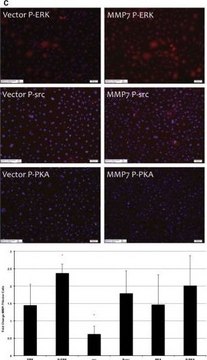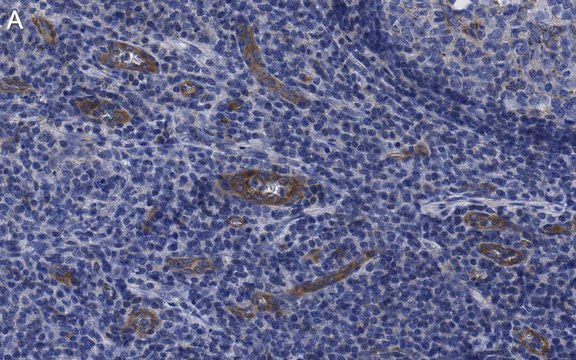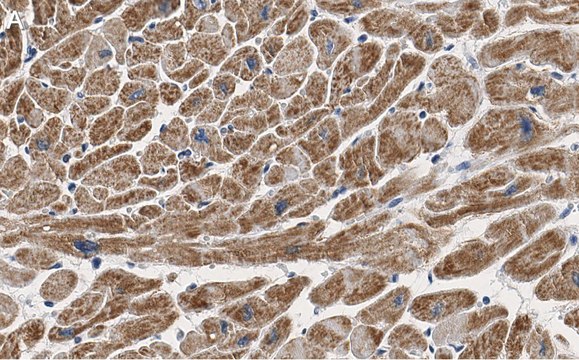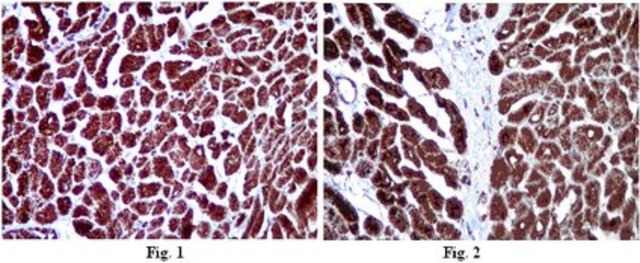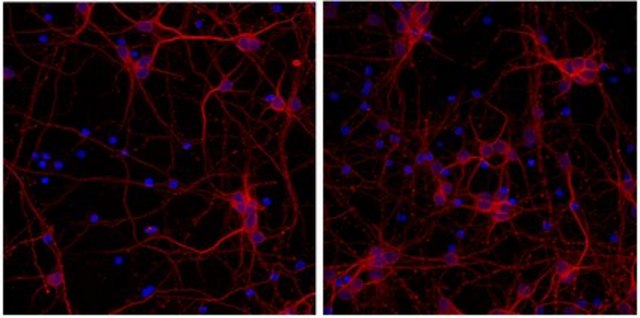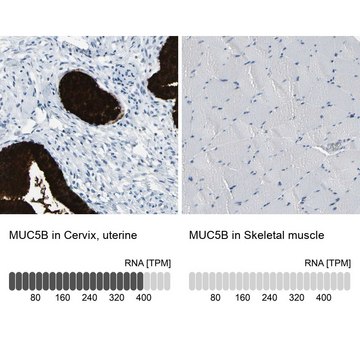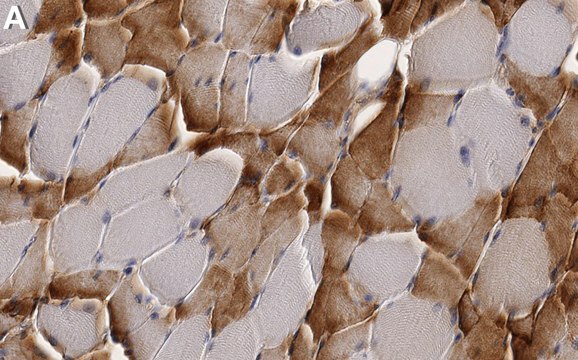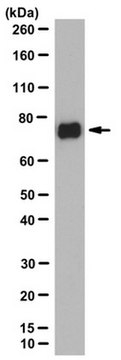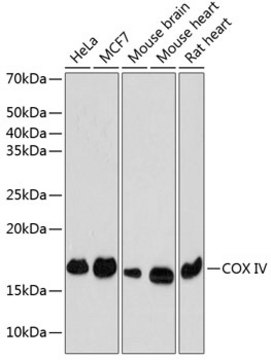一般描述
We are committed to bringing you greener alternative products, which adhere to one or more of The 12 Principles of Green Chemistry.This antibody is Preservative-free, produced without the harm or sacrifice of animals and exceptionally stable to allow for ambient shipping and storage if needed and thus aligns with "Waste Prevention", "Designing Safer Chemicals" and "Design for Energy Efficiency".
Click here for more information.
ZooMAb® antibodies represent an entirely new generation of recombinant monoclonal antibodies.
Each ZooMAb® antibody is manufactured using our proprietary recombinant expression system, purified to homogeneity, and precisely dispensed to produce robust and highly reproducible lot-to-lot consistency. Only top-performing clones are released for use by researchers. Each antibody is validated for high specificity and affinity across multiple applications, including its most commonly used application. ZooMAb® antibodies are reliably available and ready to ship when you need them.
特异性
Clone 1C5 is a ZooMAb® Rabbit recombinant monoclonal antibody that specifically detects Tie-2. It targets an epitope within 23 amino acids from the N-terminal, extracellular domain.
免疫原
KLH-conjugated linear peptide corresponding to 23 amino acids from the N-terminal, extracellular domain of human Tie-2.
应用
Quality Control Testing
Evaluated by Western Blotting in Neuro2A cell lysate.
Western Blotting Analysis: A 1:1,000 dilution of this antibody detected Tie-2 in Neuro2A cell lysate.
Tested applications
Western Blotting Analysis: A 1:1,000 dilution from a representative lot detected Tie-2 in NIH3T3 cell lysate.
Immunocytochemistry Analysis: A 1:100 dilution from a representative detected Tie-2 in HeLa, HUVEC, and NIH 3T3 cells.
Affinity Binding Assay: A representative lot of this antibody bound Tie-2 with a KD of 2.4 x 10-7 in an affinity binding assay.
Note: Actual optimal working dilutions must be determined by end user as specimens, and experimental conditions may vary with the end user
目标描述
Angiopoietin-1 receptor (UniProt: Q02763; also known as EC:2.7.10.1, Endothelial tyrosine kinase, Tunica interna endothelial cell kinase, Tyrosine kinase with Ig and EGF homology domains-2, Tyrosine-protein kinase receptor TEK, Tyrosine-protein kinase receptor TIE-2, hTIE2, p140 TEK, CD202b) is encoded by the TEK (also known as TIE2, VMCM, VMCM1) gene (Gene ID: 7010) in human. Tie-2 is a single-pass type I, homodimeric, membrane glycoprotein that is synthesized with a signal peptide (aa 1-22), which is subsequently cleaved off to produce the mature form that contains an extracellular domain (aa 23-748), a transmembrane domain (aa 749-769), and a cytoplasmic domain (aa 770-1124). It is localized on endothelial cells and serves as a receptor for angiopoietin 1, 2, and 4. Angiopoietin 1 serves as an activator of Tie-2 and angiopoietin 2 acts as an antagonist of Tie2 and prevents its activation. Tie-2 regulates angiogenesis, endothelial cell survival, proliferation, migration, adhesion, cell spreading, reorganization of the actin cytoskeleton, and maintenance of vascular quiescence. It also prevents the leakage of proinflammatory plasma proteins and leukocytes from blood vessels. Upon ligand binding it undergoes autophosphorylation on tyrosine residues in a sequential manner, where tyrosine 992 in the kinase activation loop is phosphorylated first, followed by autophosphorylation at tyrosine 1108 and at additional tyrosine residues. Phosphorylation at tyrosine 1108 is important for its interaction with docking protein 2 (DOK2) and for coupling to downstream signal transduction pathways in endothelial cells. Three isoforms of Tie-2 have been described that are produced by alternative splicing. This ZooMAb® recombinant monoclonal antibody, generated by our propriety technology, offers significantly enhanced specificity, affinity, reproducibility, and stability over conventional monoclonals. (Ref.: Leppänen, VM., et al. (2017). Proc. Natl. Acad. Sci. USA. 114 (17); 4376-4381; Murray, BW., et al. (2001). Biochemistry. 40(34); 10243-10253).
外形
Purified recombinant rabbit monoclonal antibody IgG, lyophilized in PBS, 5% Trehalose, normal appearance a coarse or translucent resin. The PBS/trehalose components in the ZooMAb formulation can have the appearance of a semi-solid (bead like gel) after lyophilization. This is a normal phenomenon. Please follow the recommended reconstitution procedure in the data sheet to dissolve the semi-solid, bead-like, gel-appearing material. The resulting antibody solution is completely stable and functional as proven by full functional testing. Contains no biocide or preservatives, such as azide, or any animal by-products. Larger pack sizes provided as multiples of 25 μL.
重悬
300 μg/mL after reconstitution at 25 μL per vial. Please refer to guidance on suggested starting dilutions and/or titers per application and sample type.
储存及稳定性
Recommend storage of lyophilized product at 2-8°C; Before reconstitution, micro-centrifuge vials briefly to spin down material to bottom of the vial; Reconstitute each vial by adding 25 μL of filtered lab grade water or PBS; Reconstituted antibodies can be stored at 2-8°C, or -20°C for long term storage. Avoid repeated freeze-thaws.
法律信息
ZooMAb is a registered trademark of Merck KGaA, Darmstadt, Germany
免责声明
Unless otherwise stated in our catalog or other company documentation accompanying the product(s), our products are intended for research use only and are not to be used for any other purpose, which includes but is not limited to, unauthorized commercial uses, in vitro diagnostic uses, ex vivo or in vivo therapeutic uses or any type of consumption or application to humans or animals.

